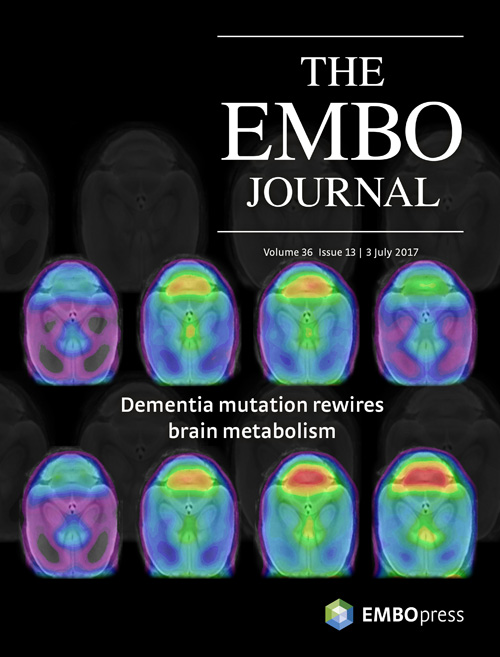The FTD-like syndrome causing TREM2 T66M mutation impairs microglia function, brain perfusion and glucose metabolism
EMBO J. 2017 Jul 3;36(13):1837-1853
| Authors/Editors: |
Gernot Kleinberger Matthias Brendel Eva Mracsko Benedikt Wefers Linda Groeneweg Xianyuan Xiang Carola Focke Maximilian Deußing Marc Suárez-Calvet Fargol Mazaheri Samira Parhizkar Nadine Pettkus Wolfgang Wurst Regina Feederle Peter Bartenstein Thomas Mueggler Thomas Arzberger Irene Knuesel Axel Rominger Christian Haass |
|---|---|
| Publication Date: | 2017 |
| Type of Publication: | Journal Article |

Genetic variants in the triggering receptor expressed on myeloid cells 2 (TREM2) increase the risk for several neurodegenerative diseases including Alzheimer's disease and frontotemporal dementia (FTD). Homozygous endogenous expression of the TREM2 p.T66M mutation impairs microglia function, brain perfusion and glucose metabolism, suggesting that microglial TREM2 acts as a signaling hub.
* Trem2 p.T66M knock-in mice show delayed resolution of inflammation
* Trem2 p.T66M knock-in mice exhibit decreased age-dependent microglial activity
* Trem2 p.T66M knock-in mice show reduced cerebral blood flow
* Trem2 p.T66M knock-in mice show reduced glucose metabolism
Abstract:
Genetic variants in the triggering receptor expressed on myeloid cells 2 (TREM2) increase the risk for several neurodegenerative diseases including Alzheimer's disease and frontotemporal dementia (FTD). Homozygous TREM2 missense mutations, such as p.T66M, lead to the FTD-like syndrome but how they cause pathology is unknown. Using CRISPR/Cas9 genome editing, we generated a knock-in mouse model for the disease-associated Trem2 p.T66M mutation. Consistent with a loss-of-function mutation we observe an intracellular accumulation of immature mutant Trem2 and reduced generation of soluble Trem2 similar to patients with the homozygous p.T66M mutation. Trem2 p.T66M knock-in mice show delayed resolution of inflammation upon in vivo lipopolysaccharide stimulation and cultured macrophages display significantly reduced phagocytic activity. Immunohistochemistry together with in vivo TSPO small animal positron emission tomography (mPET) demonstrates an age-dependent reduction of microglial activity. Surprisingly, perfusion magnetic resonance imaging and FDG-µPET imaging reveal a significant reduction in cerebral blood flow and brain glucose metabolism. Thus, we demonstrate that a TREM2 loss-of-function mutation causes brain-wide metabolic alterations pointing towards a possible function of microglia in regulating brain glucose metabolism.



